This week the Pole Barn Guru answers reader questions about the addition of a small post frame building to a 1936 stick framed house, adding a mezzanine and lean-to, and a debate between radiant floor and forced air heating of a home.
 DEAR POLE BARN GURU: I had a question from someone asking about a pole-frame addition to a 1936 stick-frame house. It would be small – under 500 s.f. and only a single-story. With the 2 different foundation and framing types, I am concerned about differential movement between the structures. I am not aware of any similar additions to other stick-framed homes so I am looking for previous examples that may have been done this way. Can the 2 structure types be connected, or should there be a movement joint between them? If a movement joint is required, I am only aware of joints for large commercial construction, like the 6-way seismic movement joints used in CA. MATT in PIERRE
DEAR POLE BARN GURU: I had a question from someone asking about a pole-frame addition to a 1936 stick-frame house. It would be small – under 500 s.f. and only a single-story. With the 2 different foundation and framing types, I am concerned about differential movement between the structures. I am not aware of any similar additions to other stick-framed homes so I am looking for previous examples that may have been done this way. Can the 2 structure types be connected, or should there be a movement joint between them? If a movement joint is required, I am only aware of joints for large commercial construction, like the 6-way seismic movement joints used in CA. MATT in PIERRE
DEAR MATT: Provided this addition is on undisturbed or properly compacted soils, column footings are adequate in diameter to support imposed loads (and reach frost depth or are frost protected), I would not expect to find ‘eye detectable’ differential movement between these two structures. As a builder in the 1990’s we erected several structures in similar situations and all have performed admirably now for three decades. I would encourage addition to be designed by a Registered Professional engineer and if soils are at all in question, a Geotechnical Report should be requested.
DEAR POLE BARN GURU: I bought a 30×48 kit from you last spring. It was delivered in September, 6 days before I left for a 6 month deployment in one of the not America countries we currently have a footprint in. I obviously didn’t get started on the garage but will be breaking ground as soon as I get home in April. Having 6 months to build the garage in my head has created some afterthoughts that I didn’t initially plan for. I would like to build a mezzanine in the back section between the end wall and the first set of trusses but would need to raise the ceiling in that first 12 feet to create enough headroom for the mezzanine. In my mind, I picture raising the ceiling joists to create a higher ceiling in that bay. Can the trusses support the ceiling if they are relocated or is the bottom chord the only part of the truss that is designed for the additional suspended load? Last question, If I want to add a lean to or a porch roof in the future, would Hansen be able to design it and sell me the materials like they did with the building? This wouldn’t happen for a few years, I just thought I would ask. Looking back, I probably should have added the lean to and porch roof to the original design but its too late to do that now! I honestly didn’t consider it before I spent the last 3 months looking at other garages online and seeing those features on other buildings. JOE in WOLFEBORO
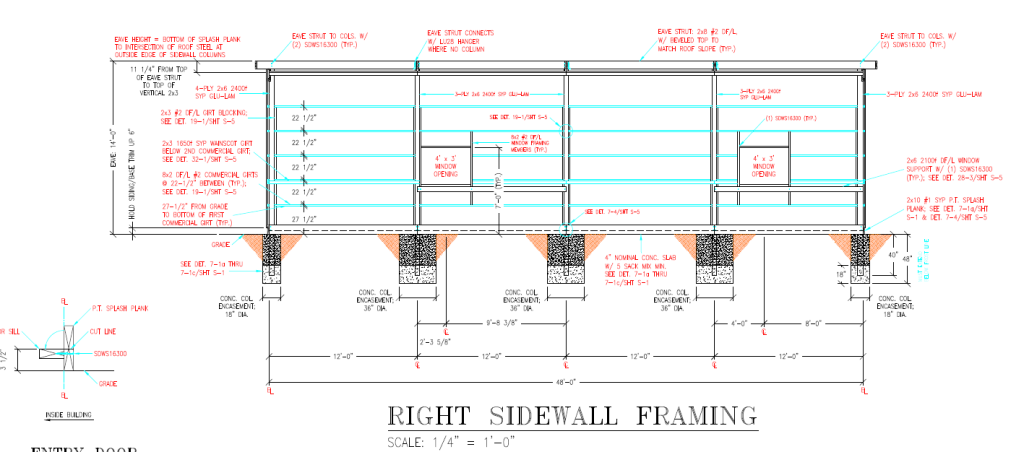
DEAR JOE: Thank you for your service sir.
Mezzanine area – a challenge (finishing area to underside of roof purlins) is going to be insulation. As it will be impossible to create ventilation from eave-to-ridge between insulation and roof deck, it eliminates batts as a possibility and pushes your design solution to closed cell spray foam. As your roof steel has Dripstop to prevent condensation, chances are good this is not a proper surface to spray foam to. If your ceiling in this area will be other than light gauge steel, your roof purlins will not be stiff enough to resist undue deflection. Ceiling joists in this last 12′ bay could be omitted to allow for adequate headroom, provided x bracing remains in place. If this mezzanine will be supported by your building columns, it is very possible column footings will be overloaded.
Yes, we can provide a lean to or porch addition at any future date. Any current building footings, that might support this addition, should best be increased in diameter by at least six inches, to account for weight of future addition.
DEAR POLE BARN GURU: Long time reader here. Hoping you can help me make a decision on something. We are building a pole barn home very soon and I’m struggling with deciding between in floor radiant heat and forced air. Obviously radiant is more even and more efficient but also costs more up front. If we did forced air, would we have moisture problems on the concrete floor? Just really torn and would like your opinion on which to use. If we go radiant we will use mini splits with ceiling cassettes for cooling. Thanks MARC in AUBURN
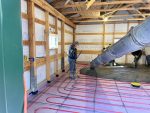 DEAR MARC: Thank you so much for being a loyal reader! Our post frame home has radiant floor heat downstairs and I couldn’t be happier with it. Nothing like warm concrete. Regardless of how you heat and cool, you should use at least R-10 rigid insulation under (and at edges of) your slab, as well as having a vapor barrier underneath. How you insulate will also play into this – if you closed cell spray foam perimeter, then you will have to mechanically dehumidify, else you are going to experience moisture issues. Reach out to my friends at www.RadiantOutfitters.com for your floor heat, they know their stuff and will treat you right.
DEAR MARC: Thank you so much for being a loyal reader! Our post frame home has radiant floor heat downstairs and I couldn’t be happier with it. Nothing like warm concrete. Regardless of how you heat and cool, you should use at least R-10 rigid insulation under (and at edges of) your slab, as well as having a vapor barrier underneath. How you insulate will also play into this – if you closed cell spray foam perimeter, then you will have to mechanically dehumidify, else you are going to experience moisture issues. Reach out to my friends at www.RadiantOutfitters.com for your floor heat, they know their stuff and will treat you right.
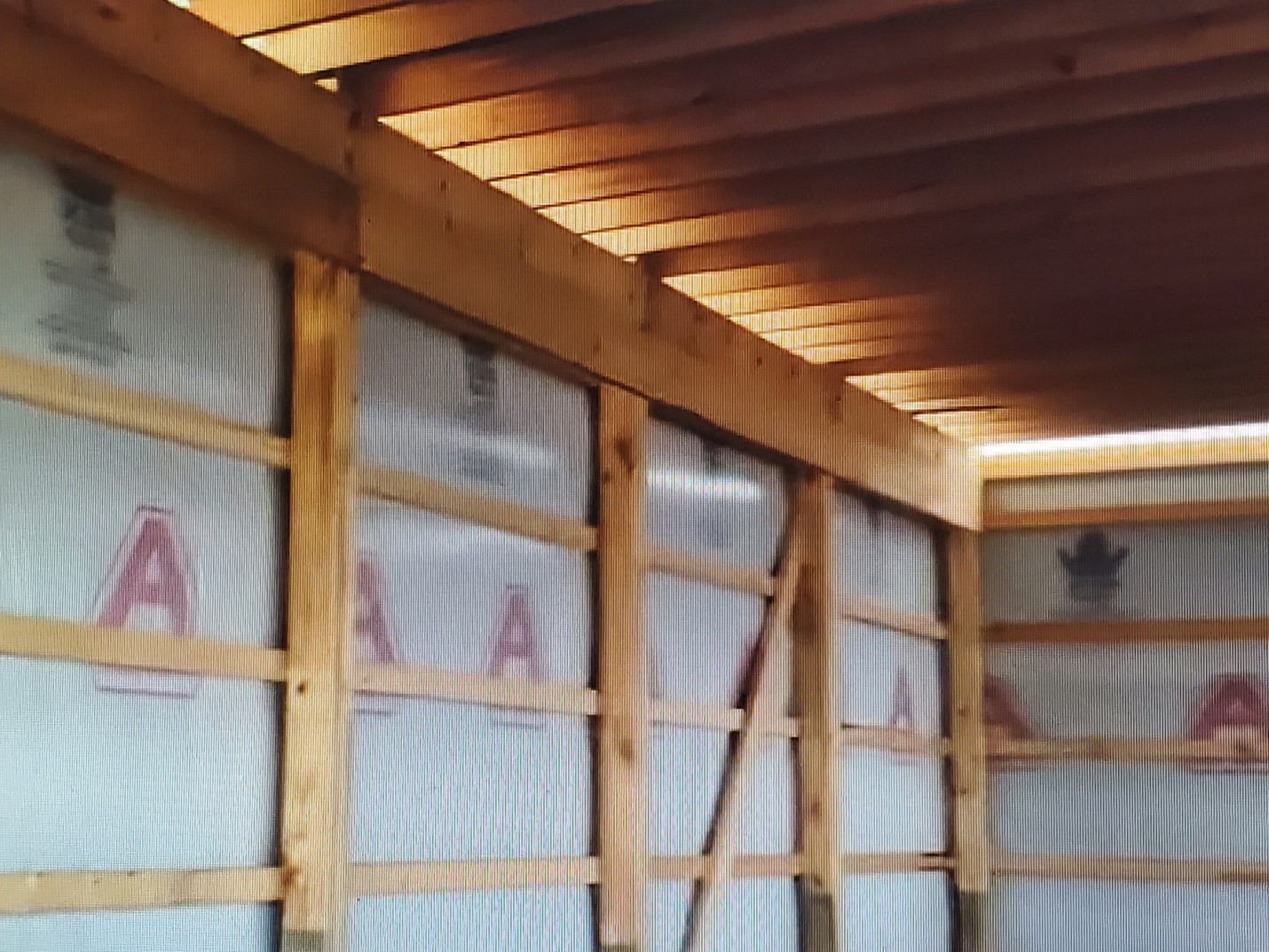
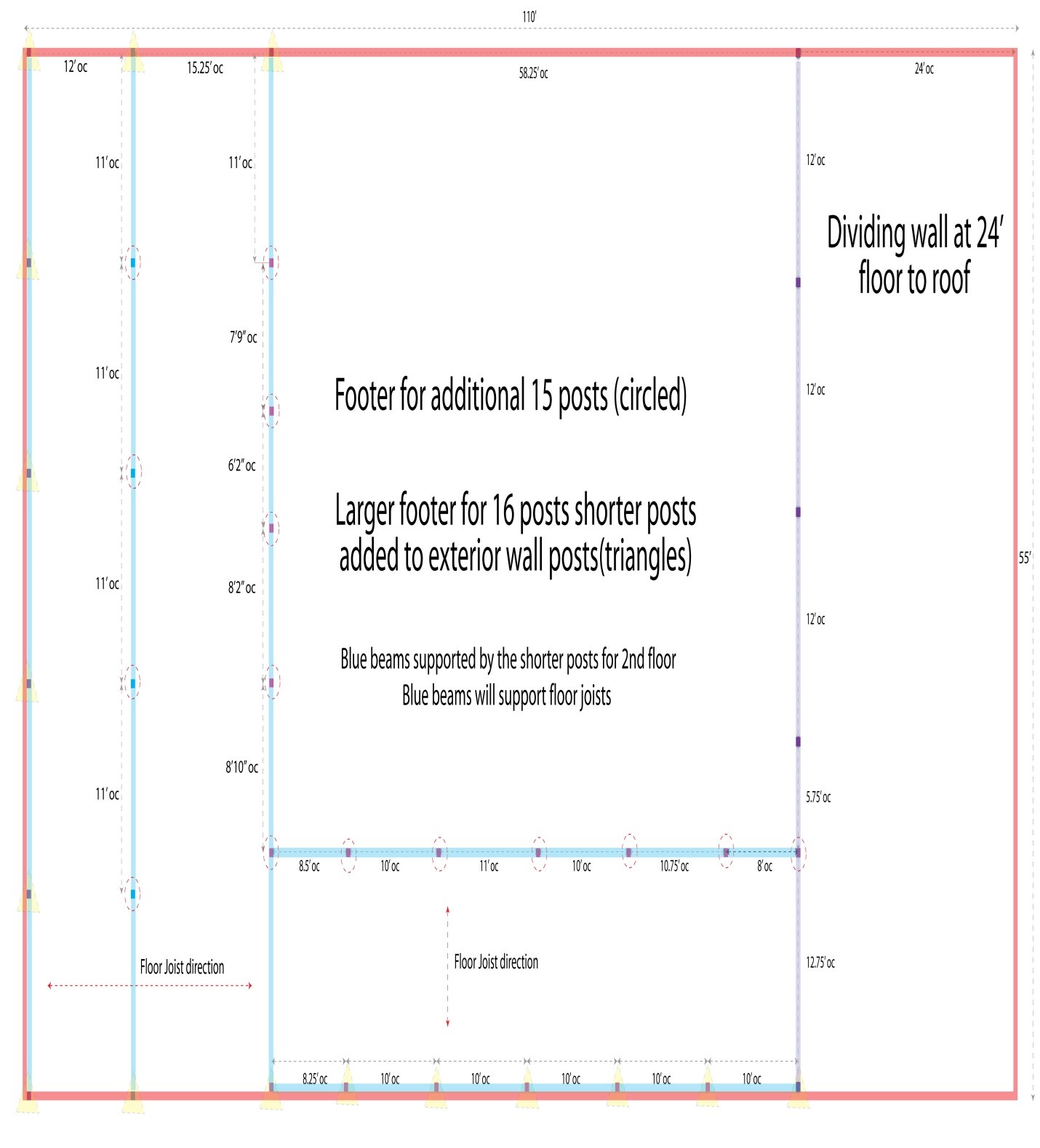
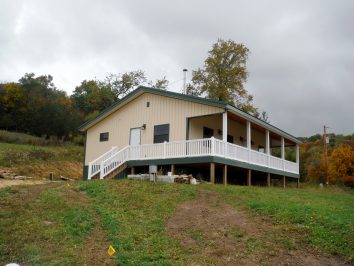
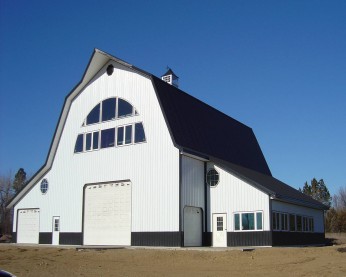
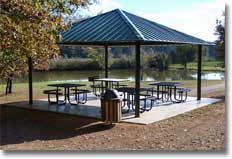
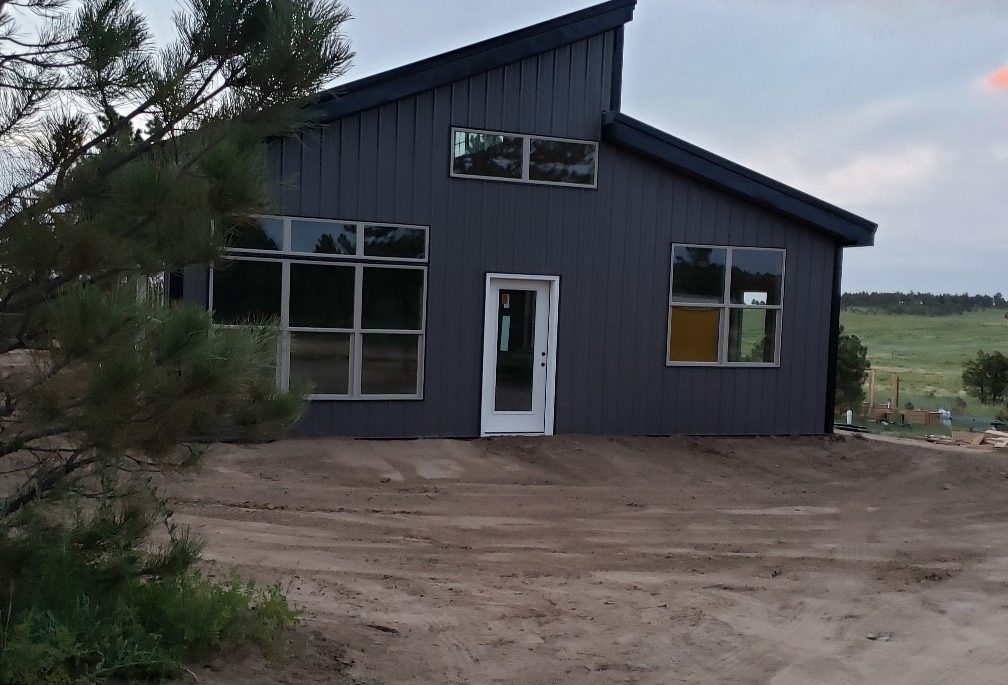
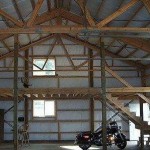 “I am planning a 45×56 pole barn, with ~16ft deep mezzanine on the end wall. The zoning rules limit the building height to 25 ft. It seems the best options are scissor trusses with 1) 4:12 roof pitch and 2:12 ceiling pitch which puts the eave height around 16ft or 2) a 3:12 roof pitch with ~1:12 interior pitch which puts the eave height around 17.5. With a 9′ 4” Mezz Floor height and a roughly 16inch thick floor, the height under the mezz will be just under 8ft, and the min/max heights above the mezz will be roughly 1) 6 -10′ or 2) 8- 10′. The space below will be used for vehicle storage (or possibly a pool table), and the Mezz will be used as a recreation area in the center with offices on either side wall. The whole building will be insulated and climate controlled.
“I am planning a 45×56 pole barn, with ~16ft deep mezzanine on the end wall. The zoning rules limit the building height to 25 ft. It seems the best options are scissor trusses with 1) 4:12 roof pitch and 2:12 ceiling pitch which puts the eave height around 16ft or 2) a 3:12 roof pitch with ~1:12 interior pitch which puts the eave height around 17.5. With a 9′ 4” Mezz Floor height and a roughly 16inch thick floor, the height under the mezz will be just under 8ft, and the min/max heights above the mezz will be roughly 1) 6 -10′ or 2) 8- 10′. The space below will be used for vehicle storage (or possibly a pool table), and the Mezz will be used as a recreation area in the center with offices on either side wall. The whole building will be insulated and climate controlled. 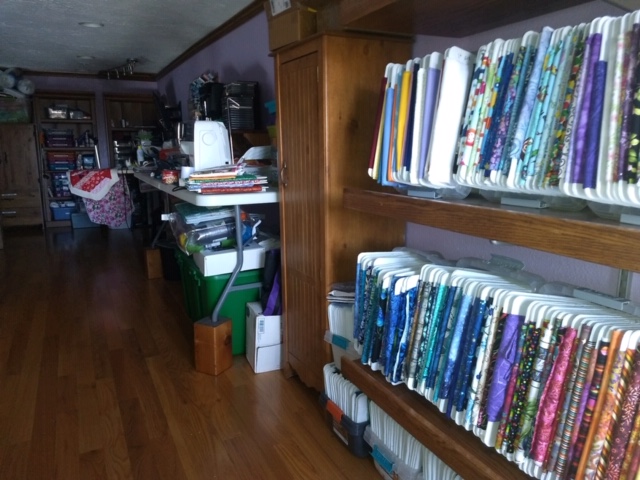
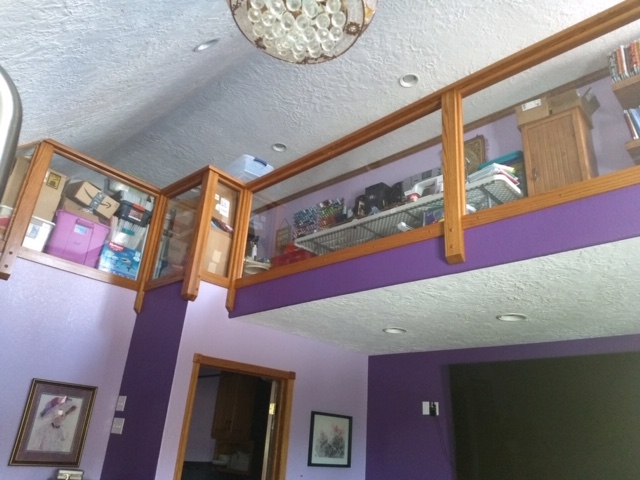

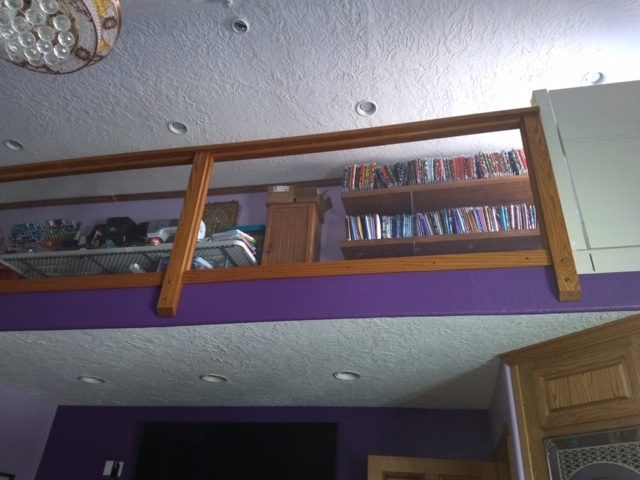
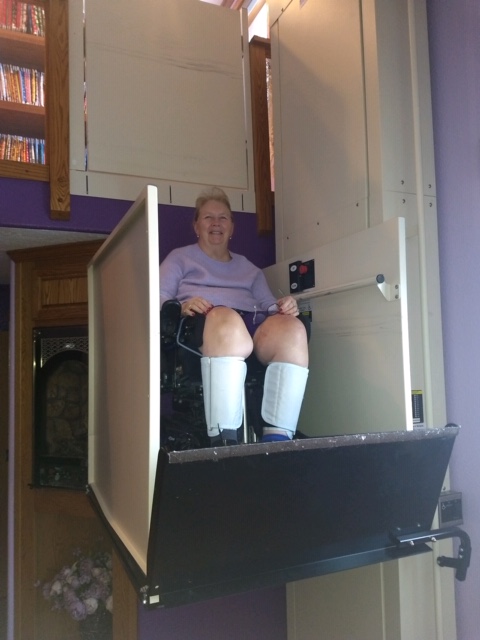
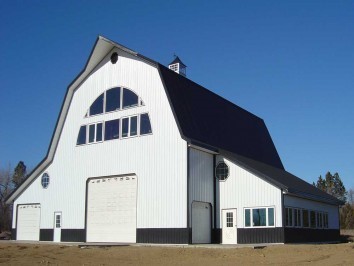 My own post frame building home, along Lake Traverse South Dakota side, features both a second floor and a mezzanine (partial third floor) where my lovely bride has her sewing and quilting projects in various stages of assembly.
My own post frame building home, along Lake Traverse South Dakota side, features both a second floor and a mezzanine (partial third floor) where my lovely bride has her sewing and quilting projects in various stages of assembly.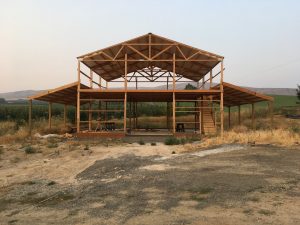 More than one pole (post frame) building owner has an idea of adding a second floor inside their existing building. Or, they plan a new post frame building with an idea of a future second floor being incorporated.
More than one pole (post frame) building owner has an idea of adding a second floor inside their existing building. Or, they plan a new post frame building with an idea of a future second floor being incorporated.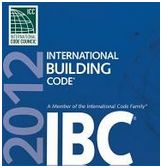 In a building containing mixed occupancies in accordance with Section 508, no individual occupancy shall exceed the height and number of story limits specified in this section for the applicable occupancies.
In a building containing mixed occupancies in accordance with Section 508, no individual occupancy shall exceed the height and number of story limits specified in this section for the applicable occupancies.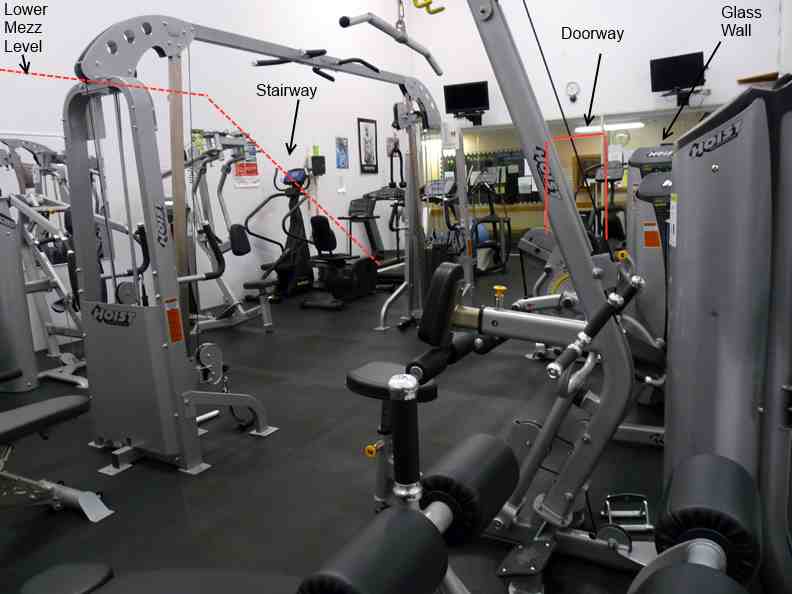 We are looking for a possible kit that can be easily carried down narrow hallways, through a standard size doorway and assembled around existing fitness equipment. If you have any information on a product that can meet these requirements, we would be very interested. Our installation goal is the end of Sept. of 2018.
We are looking for a possible kit that can be easily carried down narrow hallways, through a standard size doorway and assembled around existing fitness equipment. If you have any information on a product that can meet these requirements, we would be very interested. Our installation goal is the end of Sept. of 2018.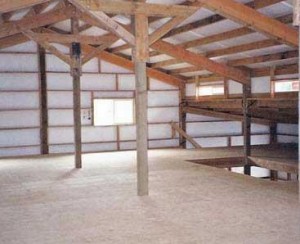 The interior 2×10 beams are attached to the inner and outer faces of the 4×6 posts. Joists are flush with the top of the beams, and each has a joist hanger. Only the inner beam carries any weight, as there is no connection (except for the 3/4″ flooring) between a joist and the outer beam.
The interior 2×10 beams are attached to the inner and outer faces of the 4×6 posts. Joists are flush with the top of the beams, and each has a joist hanger. Only the inner beam carries any weight, as there is no connection (except for the 3/4″ flooring) between a joist and the outer beam.





